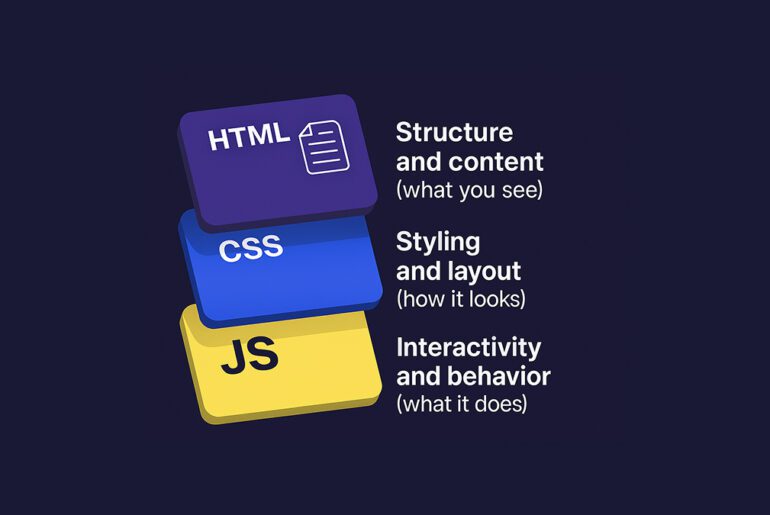If you’ve ever sat staring at lines of JavaScript while debugging a stubborn error and wondered, “Am I getting paid enough for this headache?”—you’re not alone. Salary talk is almost as common in tech circles as debates over tabs versus spaces. And in 2025, the numbers for JavaScript developers are telling an interesting story.
Let’s break it down—not just with statistics, but with context, trends, and a little reality check for anyone navigating the industry.
By 2025, the average salary for a JavaScript developer in the United States hovers between $90,000 and $135,000 per year. That range might feel broad, but it reflects how much factors like location, specialization, and experience swing the pendulum.
- Entry-level developers (0–2 years): $65,000–$85,000
- Mid-level developers (3–5 years): $95,000–$120,000
- Senior developers (5+ years): $130,000–$160,000 (and sometimes higher in big tech or fintech)
Freelancers, of course, live in their own universe—rates vary from $50 to $120 an hour depending on reputation and niche.
Here’s the kicker: remote roles are no longer the pay-equalizer many hoped they’d be. Companies are inching back to geo-adjusted pay, meaning a senior dev in New York may still pocket noticeably more than someone in Kansas, even with identical resumes.
Location matters, a lot
It feels almost unfair, doesn’t it? Same code, different paycheck. But geography continues to shape salaries in 2025.
- San Francisco & Bay Area: Average around $150,000+, with senior engineers cracking $180,000 in some cases.
- New York City: Close second, often $140,000–$170,000 for senior roles.
- Austin & Seattle: Strong competition, roughly $120,000–$150,000.
- Midwest cities (Chicago, Minneapolis, Detroit): $95,000–$120,000 is common.
- Remote roles with global teams: Anywhere between $70,000 and $110,000.
Funny enough, some companies in Europe are willing to pay nearly Silicon Valley rates for senior devs if they’re working on high-stakes projects—think AI-driven analytics or enterprise-scale cloud apps.
The framework factor
Let’s be honest: “JavaScript developer” is almost too broad a label now.
Your salary often hinges on which JavaScript ecosystem you’re living in.
- React & Next.js specialists: Slight premium, especially if you can pair it with solid UX chops.
- Node.js developers: Back-end JS engineers are earning higher averages, closer to $120,000–$145,000.
- Full-stack (React + Node): Arguably the sweet spot—companies love a one-stop shop, and they’re paying for it.
- Niche frameworks (Vue, Svelte, Astro): Growing interest, but salaries lean closer to the general averages.
If you’re skilled at pairing JavaScript with cloud infrastructure (AWS, Azure, GCP), your paycheck jumps again. Employers aren’t just buying your code—they’re buying peace of mind that you can keep things running smoothly at scale.
Remote work
Remember when remote work exploded around 2020 and everyone thought it would flatten salaries worldwide? That didn’t quite happen. By 2025, most companies have found a middle ground:
- They’ll offer remote flexibility.
- They’ll pay well—but not necessarily Silicon Valley numbers unless you live there.
A developer in Warsaw or Manila can command more than they did five years ago, but the gap with U.S. or Western European salaries hasn’t completely vanished. Global competition means companies can be choosy.
Industry trends
Here’s the elephant in the room—AI. With generative coding tools now embedded in VS Code, GitHub Copilot getting eerily good, and countless startups offering “AI coding assistants,” you’d think salaries would collapse.
But here’s the twist: salaries for skilled JavaScript developers are actually holding strong. Why? Because AI makes mediocre developers faster, but it doesn’t replace those who can architect systems, debug complex issues, or ship production-ready features under pressure.
If anything, the skill premium is rising. Companies are happy to pay extra for devs who:
- Write secure, maintainable code (AI often “hallucinates” insecure patterns).
- Understand performance at scale.
- Can bridge front-end and back-end fluently.
- Mentor junior engineers while keeping projects on track.
Think of it this way: AI can generate code snippets, but it can’t yet take responsibility. And responsibility is what companies pay top dollar for.
How salaries compare globally
Just for perspective, here’s how JavaScript salaries stack up in 2025:
- United States: $90,000–$135,000
- Canada: $75,000–$105,000
- United Kingdom: £50,000–£75,000 (~$63,000–$95,000)
- Germany: €55,000–€80,000 (~$58,000–$85,000)
- India: ₹8L–₹20L (~$10,000–$24,000, though top-tier devs can hit $40,000+)
- Australia: AUD 90,000–140,000 (~$58,000–$90,000)
There’s still no “global parity,” but the gaps are narrower than they were a decade ago.
What about benefits and perks?
Salary’s only part of the picture. In 2025, perks are becoming a bigger bargaining chip, especially as companies tread carefully with cash. Expect things like:
- Remote-first flexibility with stipends for home office setups
- Mental health support or wellness allowances
- Professional development budgets (bootcamps, conferences, certifications)
- Equity packages at startups (still a gamble, but tempting)
The more competitive the market, the more likely a company sweetens the deal with perks—sometimes even more than they adjust salaries.
Advice for developers negotiating in 2025
If you’re a developer eyeing the market this year, here are some practical pointers:
- Know your worth regionally – Don’t compare Bay Area salaries if you’re in rural Ohio. Companies know the benchmarks.
- Highlight unique stacks – If you’re fluent in React, Node, and have AWS certs? That’s leverage.
- Show adaptability with AI tools – Employers like to see you’re not threatened by AI, but using it effectively.
- Negotiate total compensation – Salary, bonus, equity, and benefits all count.
And here’s a bit of real talk: sometimes walking away from an offer gets you more than saying yes too quickly.
Are JS devs still in demand?
Absolutely. Despite chatter about low-code platforms and AI-powered dev tools, companies still need human engineers—especially in JavaScript. It’s the backbone of modern web apps, and frankly, the web isn’t going anywhere.
Yes, salaries are adjusting. Yes, companies are cautious. But a skilled JavaScript developer in 2025 still commands respect and solid pay.
So, if you’re reading this while sipping cold brew and tweaking your React components, remember: the market sees you, values you, and—if you negotiate wisely—will pay you well.










